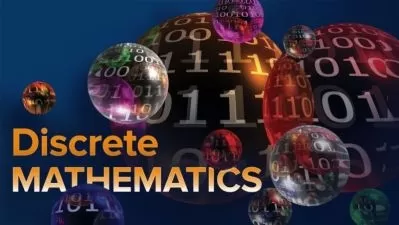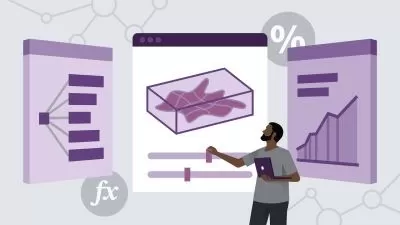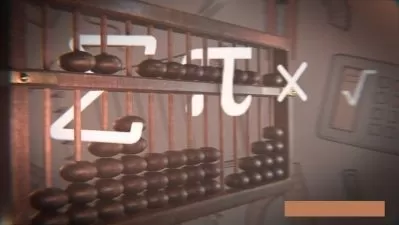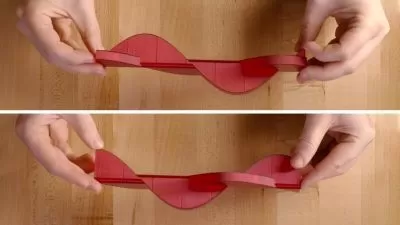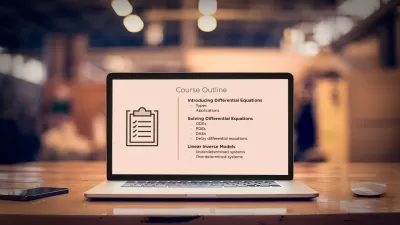Understanding Calculus: Problems, Solutions, and Tips
Bruce H. Edwards
18:32:06
Description
Calculus is the greatest mathematical breakthrough since the pioneering discoveries of the ancient Greeks. Without it, we wouldn't have spaceflight, skyscrapers, jet planes, economic modeling, accurate weather forecasting, modern medical technologies, or any of the countless other achievements we take for granted in today's world.
Indeed, calculus is so versatile and its techniques so diverse that it trains you to view problems, no matter how difficult, as solvable until proved otherwise. And the habit of turning a problem over in your mind, choosing an approach, and then working through a solution teaches you to think clearly—which is why the study of calculus is so crucial for improving your cognitive skills and why it is a prerequisite for admission to most top universities.
Understanding Calculus: Problems, Solutions, and Tipsimmerses you in the unrivaled learning adventure of this mathematical field in 36 half-hour lectures that cover all the major topics of a full-year calculus course in high school at the College Board Advanced Placement AB level or a first-semester course in college. With crystal-clear explanations of the beautiful ideas of calculus, frequent study tips, pitfalls to avoid, and—best of all—hundreds of examples and practice problems that are specifically designed to explain and reinforce major concepts, this course will be your sure and steady guide to conquering calculus.
Your teacher for this intensively illustrated DVD set is Professor Bruce H. Edwards, an award-winning instructor at the University of Florida and the coauthor of a best-selling series of calculus textbooks.
Accomplish Mathematical WondersCalculus is one of the most powerful and astonishing tools ever invented, yet it is a skill that can be learned by anyone with an understanding of high school mathematics.
Among its many uses, calculus teaches you to
- analyze a multitude of situations involving change, whether it's an accelerating rocket, the growth of a bacterial colony, or fluctuating stock prices;
- calculate optimum values, such as the greatest volume for a box with a given surface area or the highest feasible profit from the sales of an item;
- measure complex shapes—for example, the volume of a doughnut-shaped object called a torus or the area of a plot of land bounded by a river.
Solving many types of calculus problems usually requires employing precalculus—algebra and trigonometry—to work out a solution. For this reason, Professor Edwards devotes the first few lectures to reviewing key topics in precalculus, then he covers some basic concepts such as limits and continuity before moving on to the two simple, yet brilliant ideas behind calculus—the derivative and the integral.
Despite the apparent differences between the derivative and integral, you discover that they are inextricably linked by the surprising fundamental theorem of calculus. Throughout the course, you will discover that simplicity is one of the hallmarks of the essential ideas of calculus.
. . . the Power of the Derivative . . .The derivative is the foundation of differential calculus, which you study through Lecture 17, exploring its many applications in science, engineering, business, and other fields.
You start with a classic problem that illustrates one of the core ideas of calculus: Can you find the tangent line to a curve at a given point? This is the same as asking if the rate of change of the curve can be measured at that point—with a host of potential applications in situations where a quantity is changing, such as the speed of an accelerating vehicle. The answer is: Yes, and with amazing simplicity! After learning the steps involved, you have solved your first calculus problem.
You then
- study a variety of ways to find derivatives, including the power rule, the constant multiple rule, the quotient rule, the chain rule, and implicit differentiation;
- learn how to find extrema—the absolute maximum and minimum values of functions, using derivatives; and
- apply derivatives to solve a variety of real-world problems.
Next, you are introduced to the integral, using a classic problem in which you are asked to find the area of a plot of land bounded by curves. To solve this problem, calculus provides us with the integral—a powerful tool that allows us to calculate areas, volumes, and other characteristics of complex shapes. The balance of the course is devoted to integral calculus and its applications. You study
- arc length and surface area—two applications of calculus that are at the heart of engineering;
- integration by substitution—a method that enables you to convert a difficult problem into one that's easier to solve; and
- the formulas for continuous compound interest, radioactive decay, and a host of other real-world applications.
A Calculus Course for All
Understanding Calculus is well suited for anyone who wants to take the leap into one of history's greatest intellectual achievements, whether for the first time or for review. Those who will benefit include these learners:
- Any student now studying calculus who would like personal coaching from a professor who has spent years honing his explanations for the areas that are most challenging to students. This course is specifically designed to cover all the major topics of a full-year calculus course in high school at the College Board Advanced Placement AB level or a first-semester course in college.
- Parents of students studying calculus, a subject with which they often give up trying to help their high-school-age children—at a critical turning point in their educational careers.
- Those who have already taken calculus and who need a thorough review.
- Anyone who didn't understand calculus on the first try and wants a lucid, in-depth presentation, with lots of interesting, well-explained practice problems.
The plentiful graphs, equations, and other visual aids in these lectures are clear and well-designed, allowing you to follow each step of Professor Edwards's presentation in detail. The accompanying workbook includes lecture summaries, sample problems and worked-out solutions, tips, and pitfalls; lists of formulas and theorems; a trigonometry review sheet; a glossary; and a removable study sheet to use for quick and easy reference during the lectures.
The Ideal Calculus TeacherProfessor Edwards is the ideal calculus teacher—friendly, animated, encouraging, and witty, but also focused on presenting the material in an organized and understandable way. For anyone who feels intimidated by calculus, there is a distinct joy in being able to calculate a derivative after just a few lessons. It's easier than one might have supposed, and it opens an amazing new world of insight.
As an educator who has been honored repeatedly, both for his teaching and for his textbooks, Professor Edwards is a fount of valuable advice. He offers frequent tips for success, including guidance for those preparing for the Advanced Placement Calculus AB exam, for which he has served as a grader and for which this course is excellent preparation. Among his suggestions are these:
- Graphing calculators: While some calculus teachers prefer that their students not use graphing calculators, the Advanced Placement exam requires them. Professor Edwards points out the strengths of graphing calculators as well as the weaknesses—for example, that in certain situations they can fool you.
- Memorization: Always memorize what your teacher assigns. However, no one can memorize all the formulas in calculus. A good approach is to commit to memory the idea behind a technique—for example, that the disk method of computing the volume of a solid involves slicing it into innumerable disks.
Ever since its inception in the 17th century, calculus has spawned a continuing flood of new ideas and techniques for solving problems. It's easy to be overwhelmed by the richness of this subject, which is why many beginning students find themselves struggling.
Through Professor Edwards's exceptional teaching in Understanding Calculus, you will come away with a deep appreciation for the extraordinary power of calculus, a grasp of which methods apply to different types of problems, and, with practice, a facility for unlocking the secrets of the ceaselessly changing world around us.
More details
User Reviews
Rating
Bruce H. Edwards
Instructor's Courses
The Great Courses
View courses The Great Courses- language english
- Training sessions 38
- duration 18:32:06
- English subtitles has
- Release Date 2023/06/06






